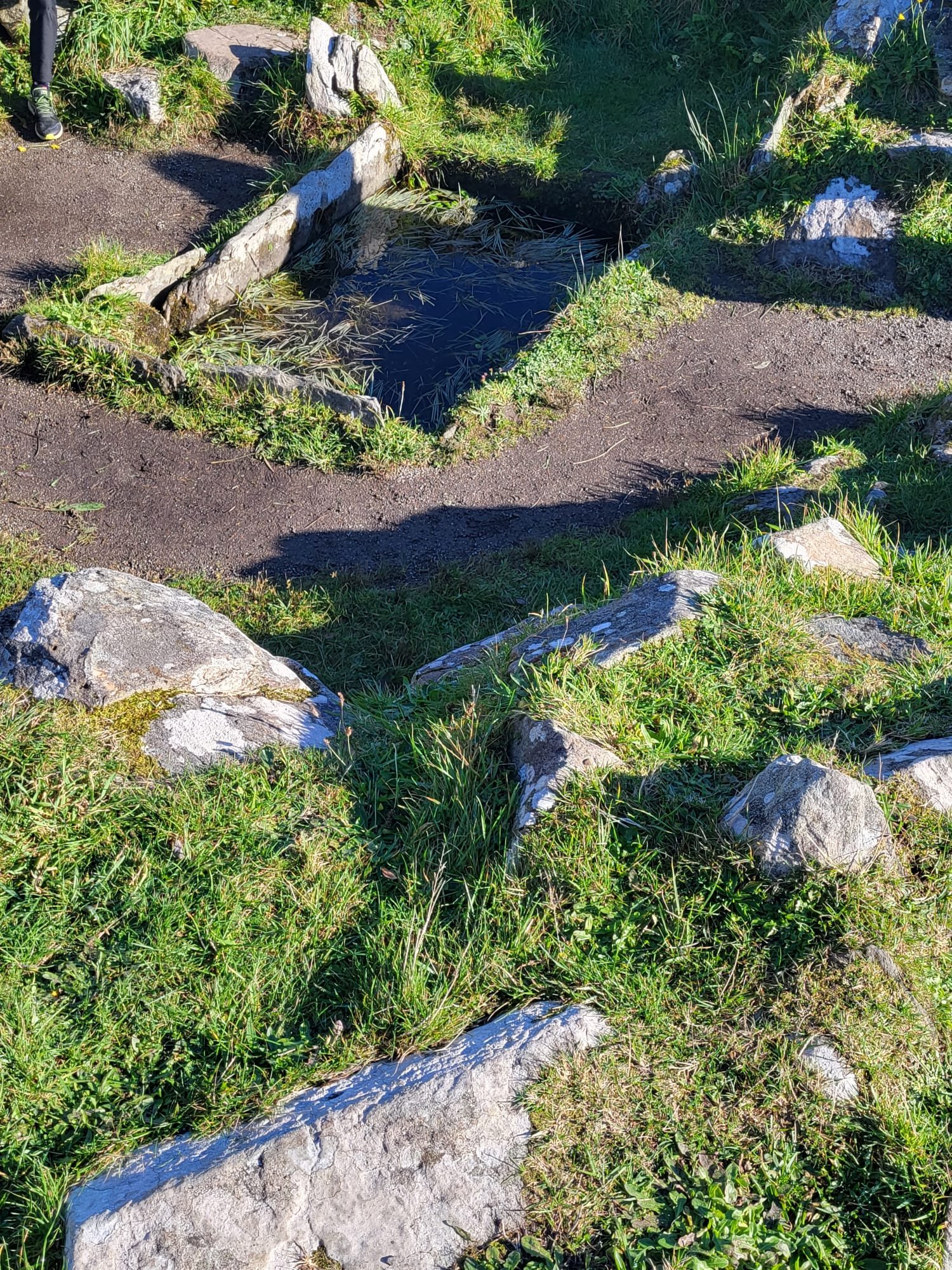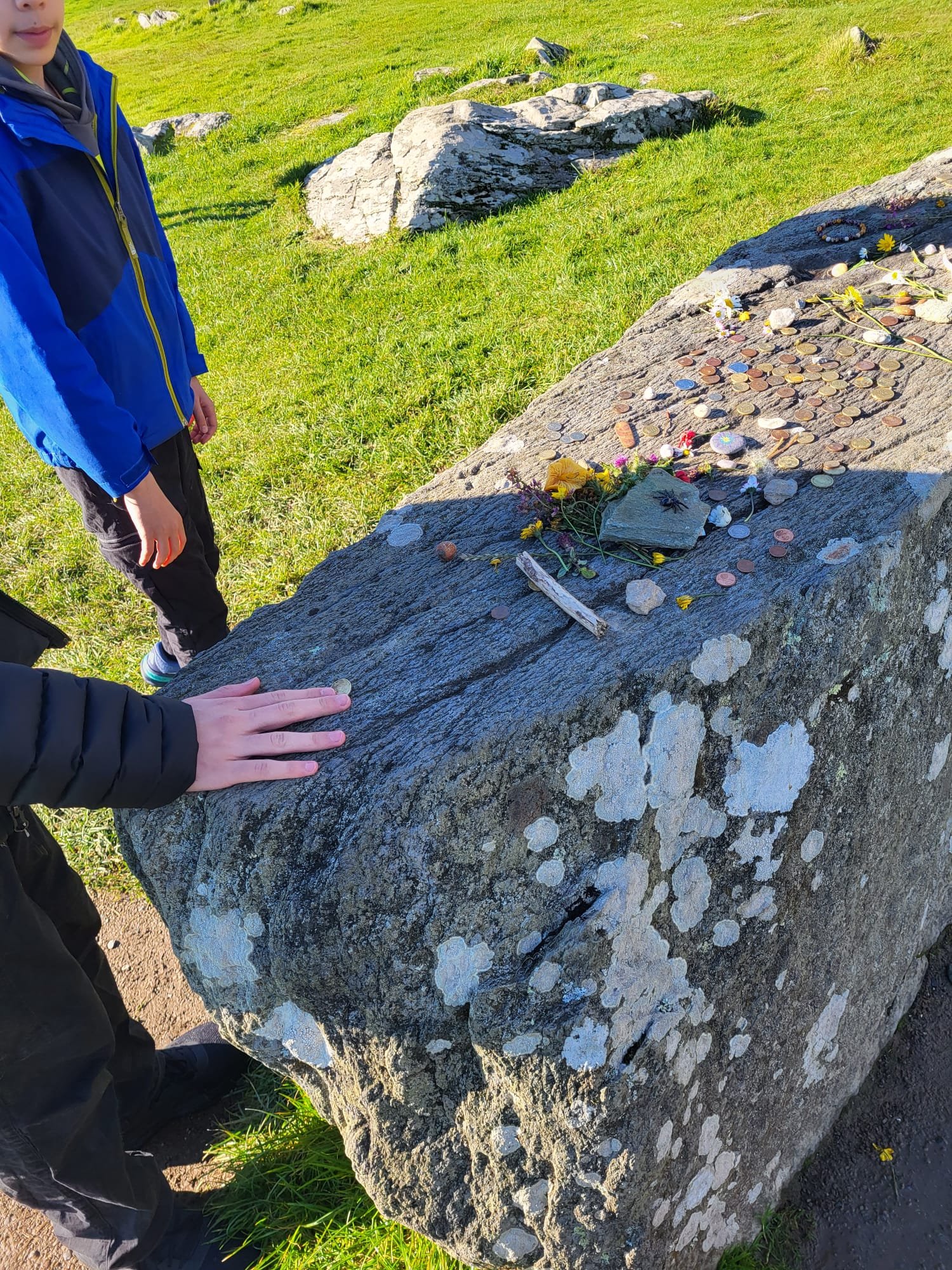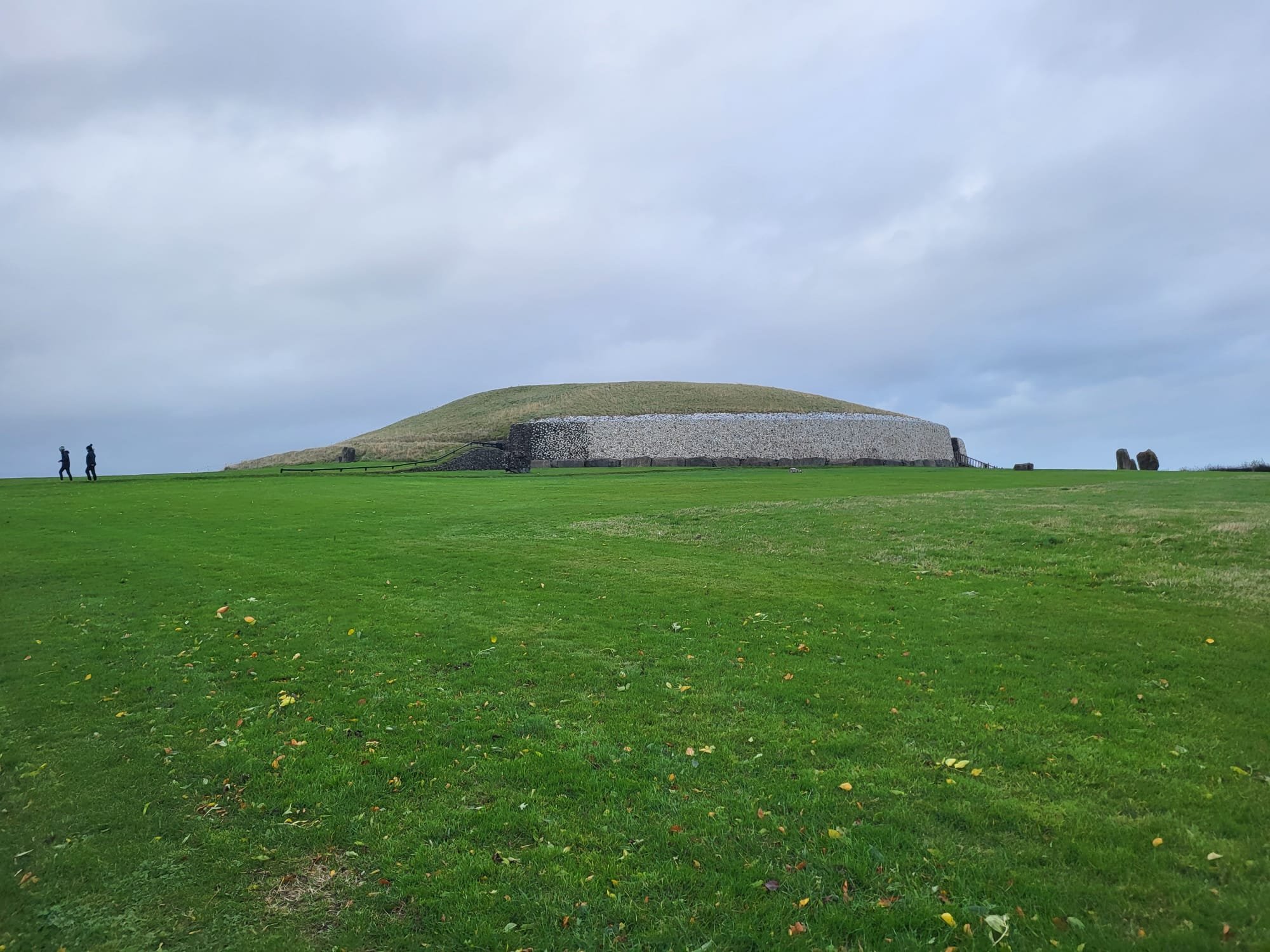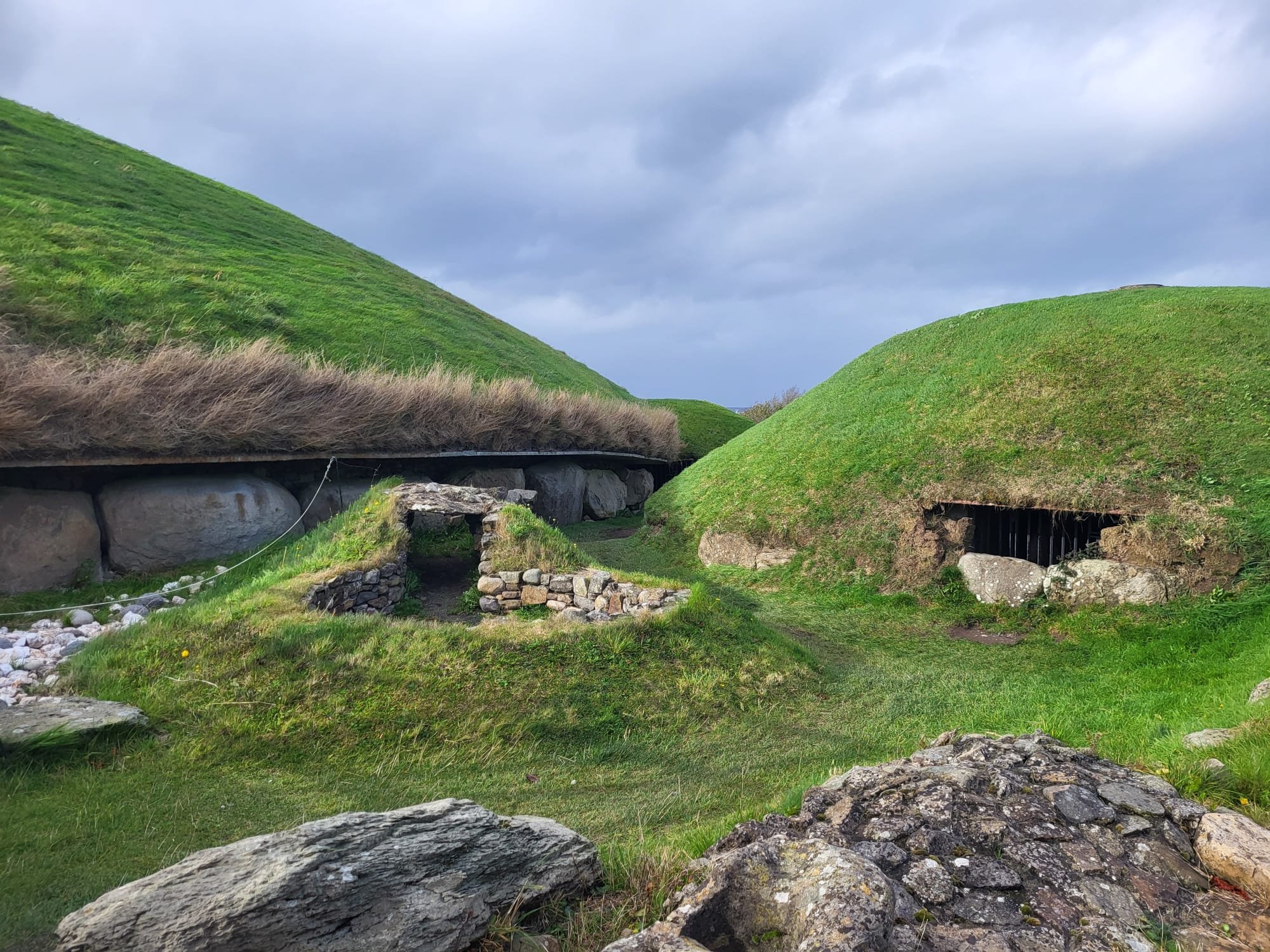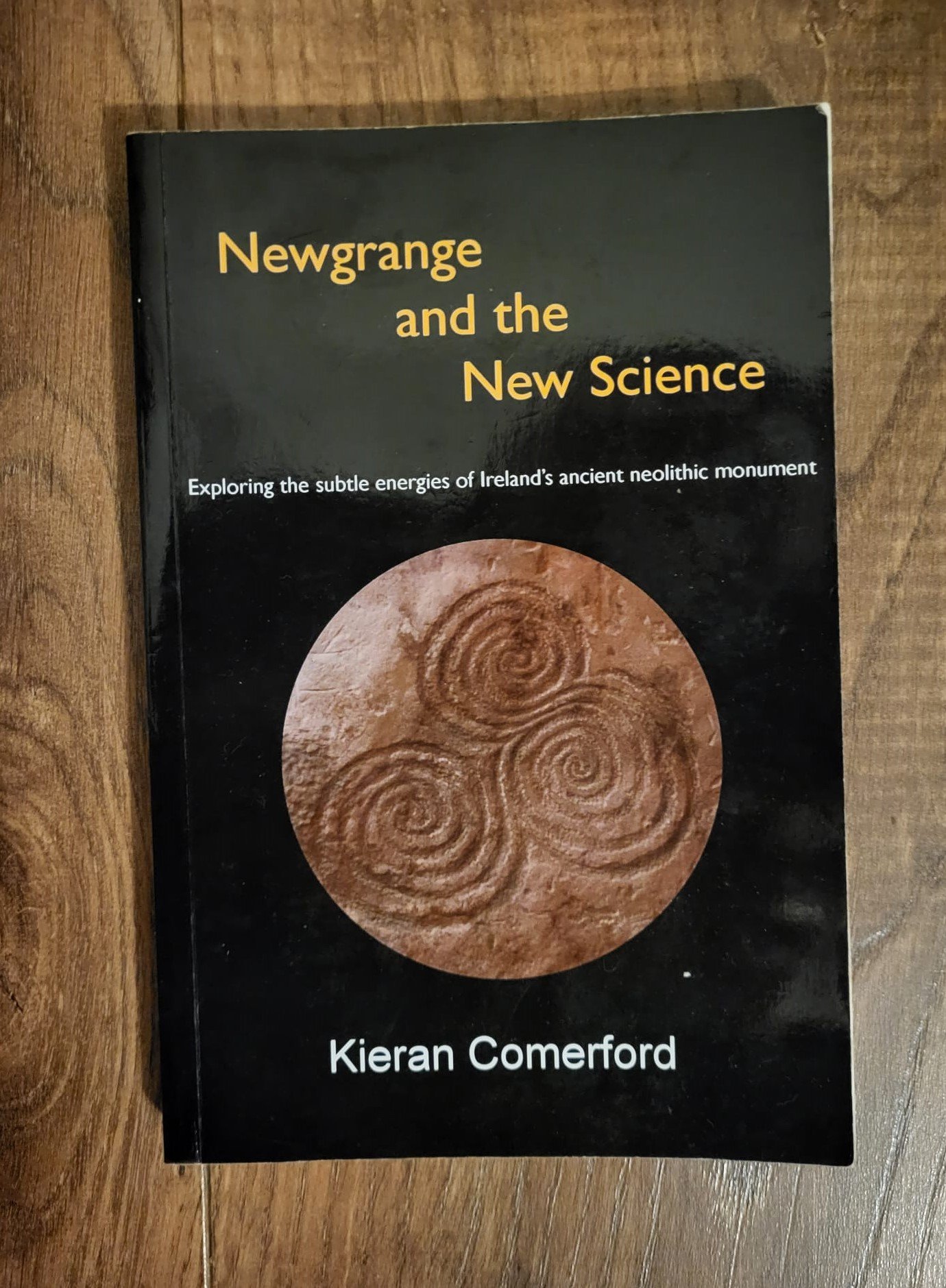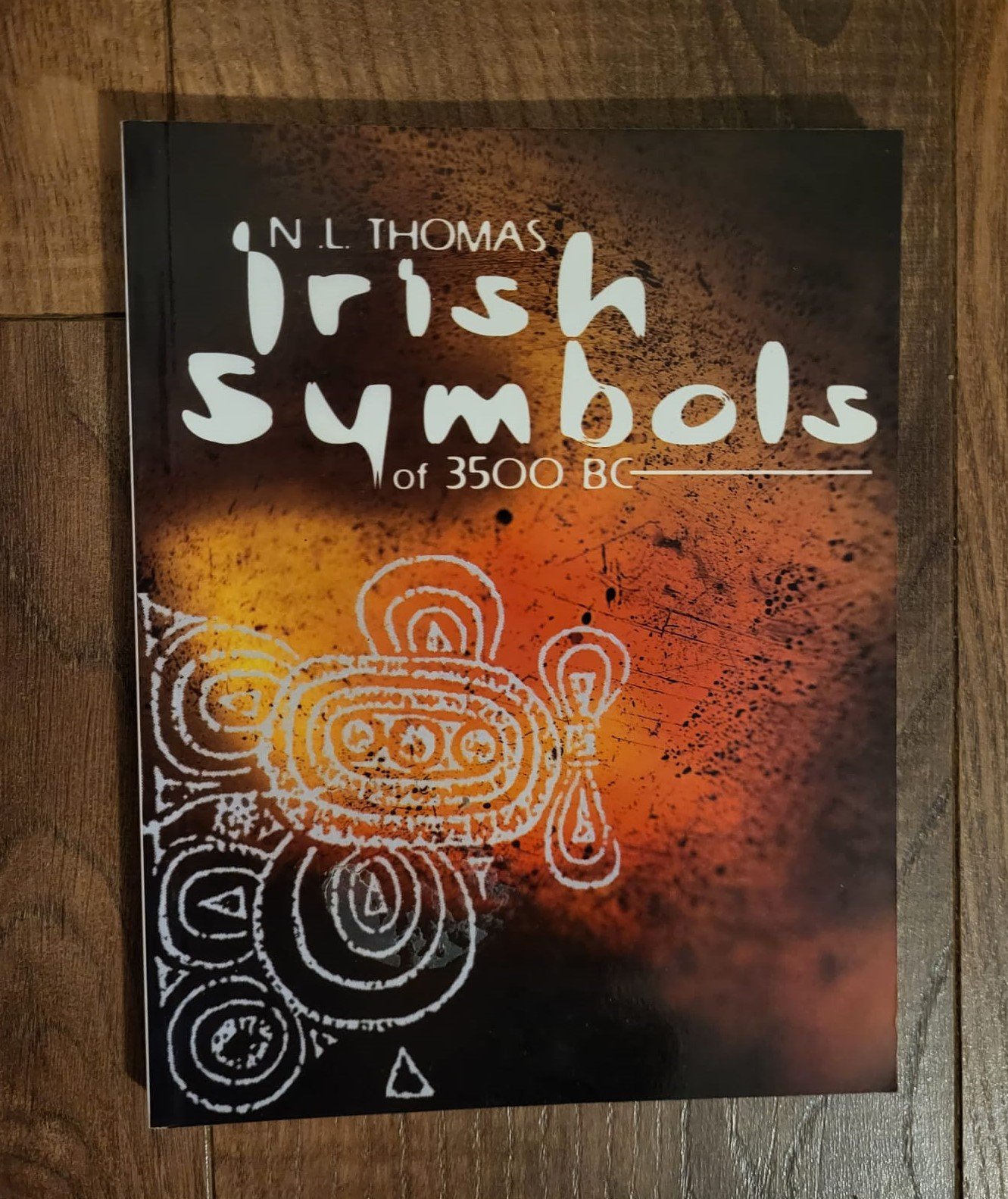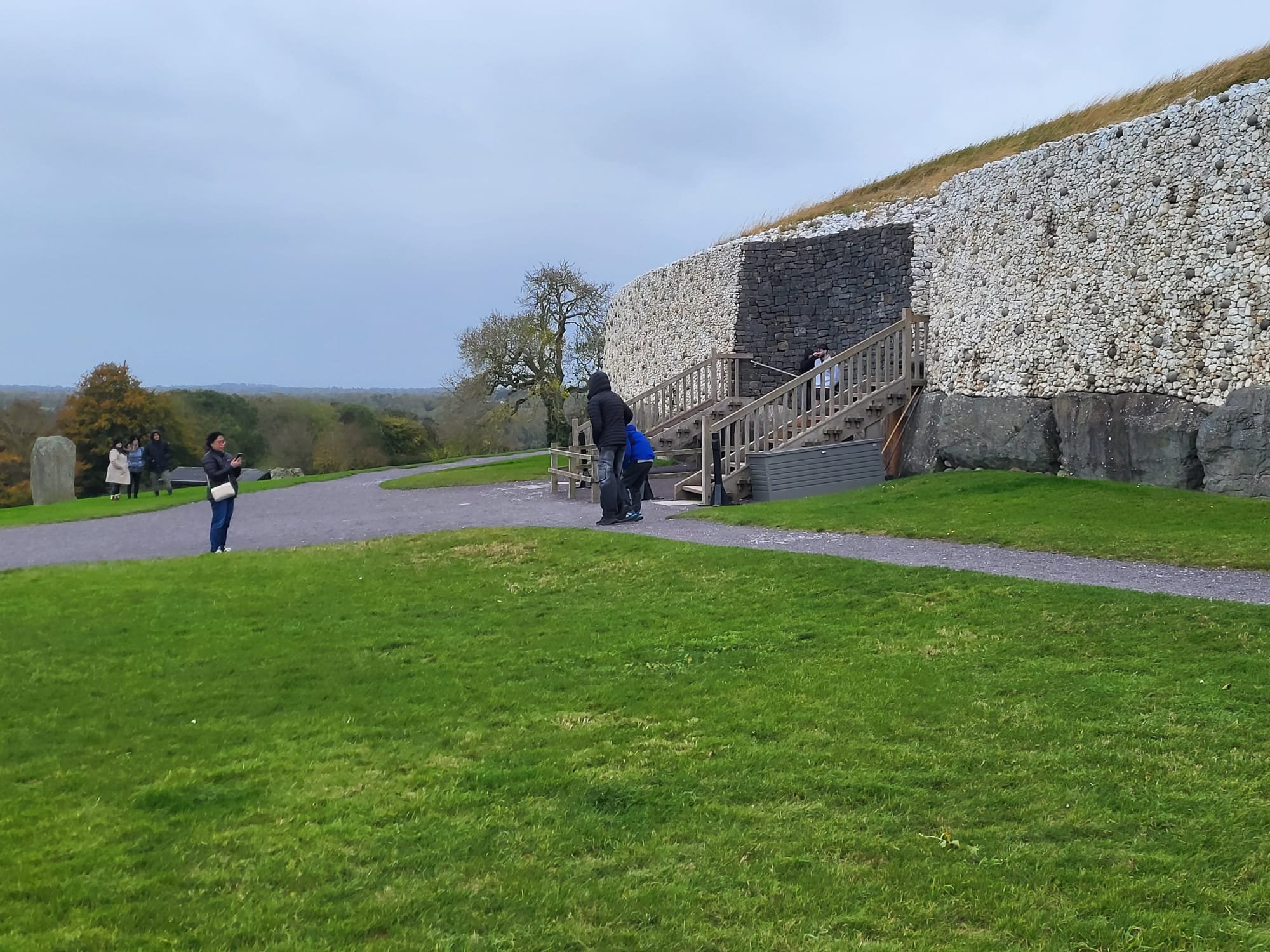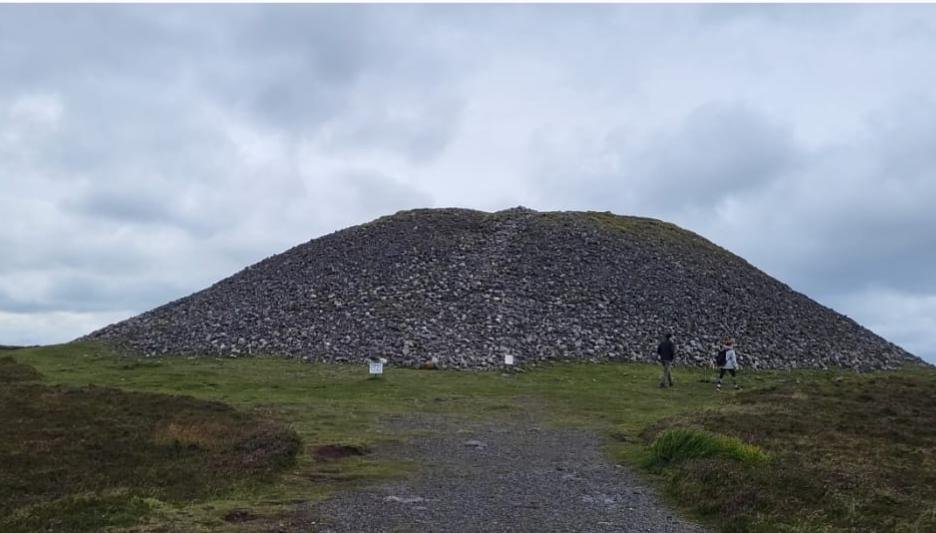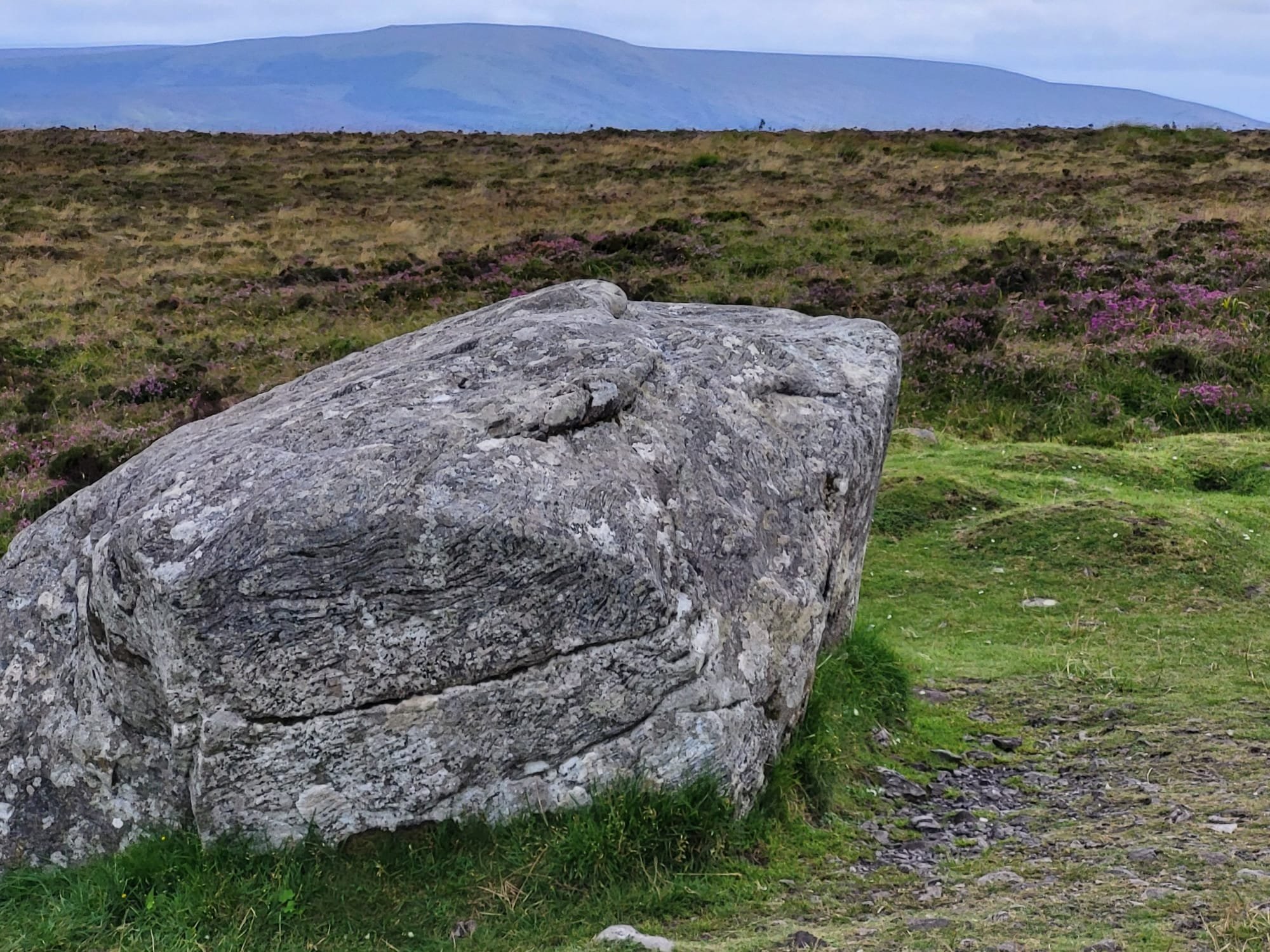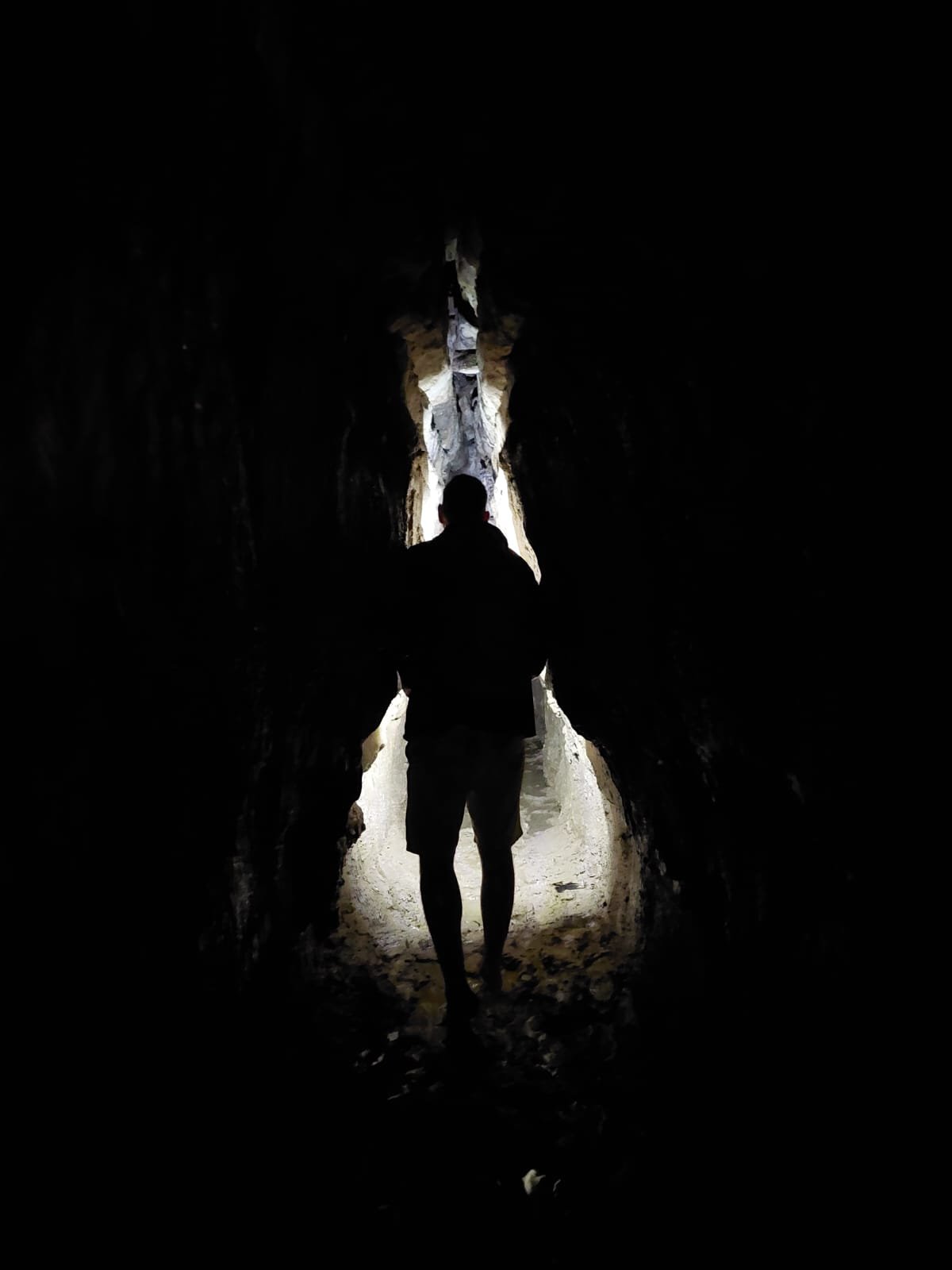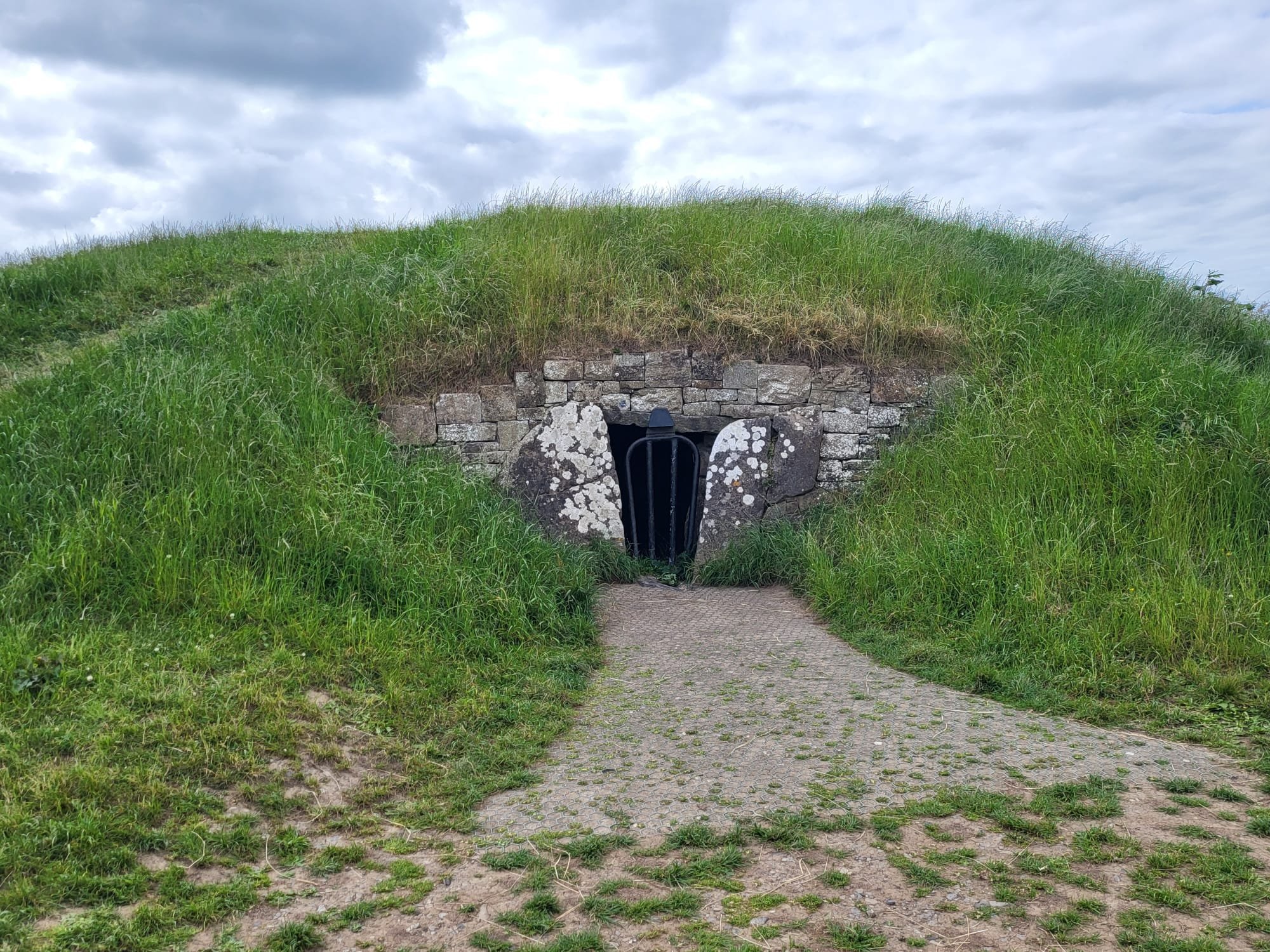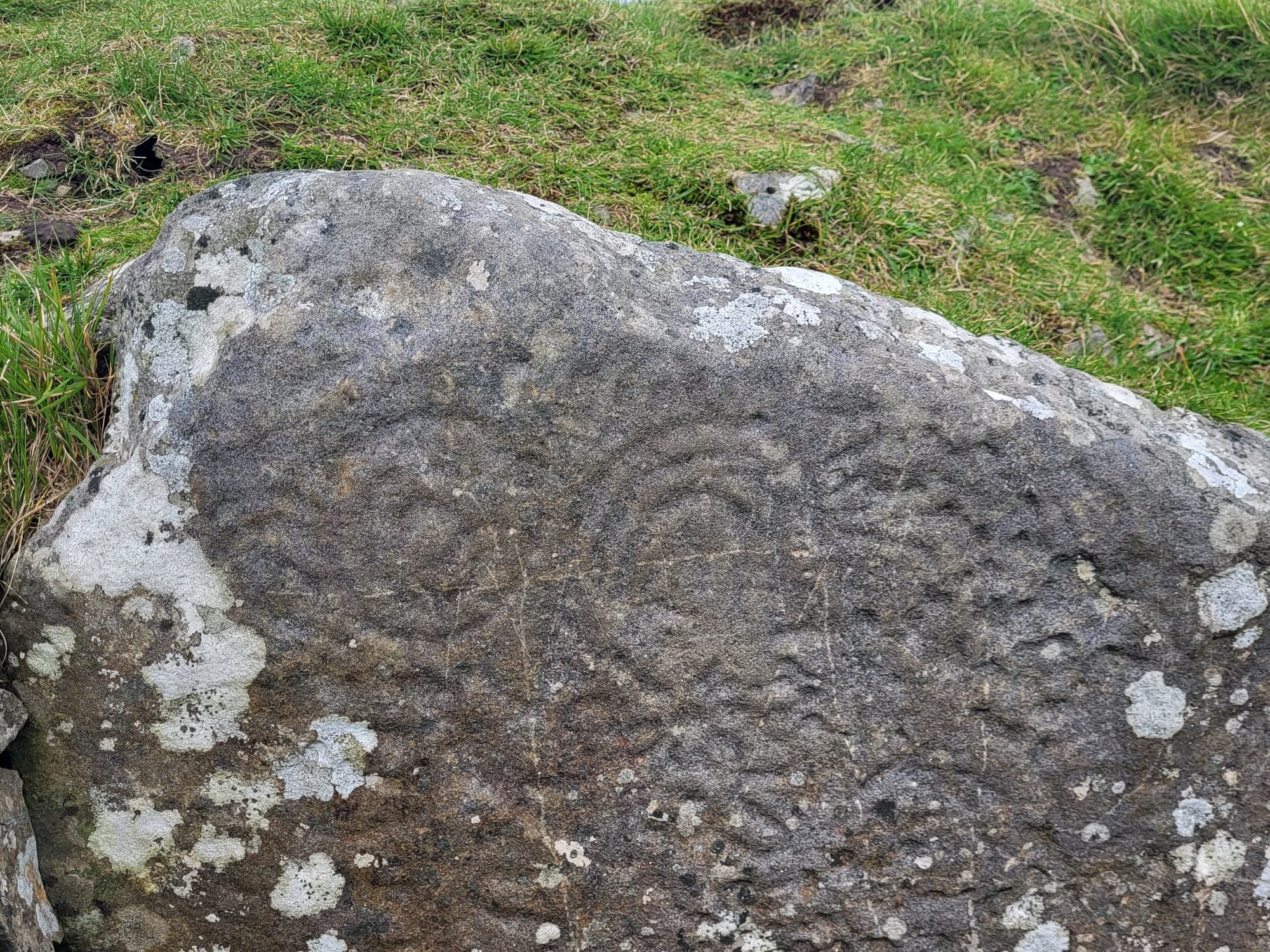A Visit to Drombeg Stone Circle – The Druid’s Alter
In honour of my great grandfather, William Bulfin, known for his travels across Ireland, I’d like to share a recent journey of my own to Drombeg stone circle, one of Ireland’s more impressive megalithic arrangements.
William was a well-known writer in Irish literary circles around the turn of the twentieth century who emigrated to Argentina before returning to the Emeral Isle many years later. While in Argentina he worked as a journalist for the Southern Cross newspaper. He is best remembered for his book ‘Rambles in Eirinn’ where he documents his travels throughout Ireland, and his encounters with the various locals of the townlands he visited.
A new edition of ‘Rambles in Eirinn’ has just been published (‘25) and is available in all good Irish bookshops or to order on Amazon, so in the spirit of his book my trip will include a brief encounter with a colourful character, in this case a wily west Cork dairy farmer.
The Journey
During the Halloween midterm, the wife and I brought the kids to Kinsale in west Cork for a break, with some sightseeing in mind. Kinsale is a picturesque town located at the mouth of the river Bannon, guarded by two former British army barracks built on peninsulas, now museums jutting out into the Atlantic Ocean.
In front of the town is a fine marina full of boats and small yachts, but it wasn’t for the sailing we came, so driving across a long bridge spanning some of the widest sections of the Bannon on a late sunny morning, we set out for Drombeg stone circle.
Situated in the small townland of Gandore, Drombeg stone circle is roughly 1-hour away, and not far from the better-known coastal town of Clonakilty, also scenic and like Kinsale busy with tourists, particularly during the summer.
Following Google maps ‘recommended’ fastest route, we found ourselves navigating treacherous back roads bending here, there, and everywhere, sometimes only with enough room for a single car to pass, all with the intent to shave a few minutes of our journey time.
Fortunately, encounters with other vehicles on those sections of road proved rare. However, I do recall coming out of a tight bend to find an oncoming lorry bearing down us and just being able to ‘keep in enough’ to avoid a serious accident. No, in future, I will stick to the main roads where possible even if it takes a few more minutes to get to wherever we’re going. Lesson learned.
The Stones
Finally, after some white-knuckle driving we arrived at the small carpark for Drombeg stone circle, still unsure how long the walk would take. We passed through a small opening in a waist high wall and after a short walk down a grassy avenue entered a vibrant green field to see the stones under a brilliant blue sky only a few dozen meters before us.
Drumbeg Stone Circle, as approached from the grassy avenue
There are 17 stones in all, 16 orthostats (standing upright) and one blocky recumbent (laying flat), the axial stone, all local sandstone. This monument is thought to have been constructed around 3,000 years ago, making it late Bronze age.
The axial stone lies directly opposite the portal pair, or two largest uprights which act like a gateway into the circle. The stones gradually decrease in height from the portal pair as they travel around to reach the low-lying axial stone.
Entering the Portal
The direction of the portal pair and axial stone align with the setting winter solstice sun. Some form of equinox or solstice sun alignments are common in Irish Megalithic monuments; constructed with astrological observation in mind.
Another key feature of the axial stone is that the upper surface has two hollows, one of which is surrounded by a carving. It is speculated by many that this blocky horizontal stone acted as an altar for cerimonial or ritualistic purposes, hence this circle often being referred to as the ‘Druid’s Alter’.
Settlement
Only a few steps away from the stones is a fine example of a ‘Fulacht Fiadh,’ a rectangular stone lined pit which was filled with water before hot stones were rolled into it to boil the water. It is generally believed this was an ancient method used to cook meat. However, some speculate the heated water may have been used for bathing or even brewing beer.
Nearby this cooking feature the foundations of a stone hut were also discovered. This structure has been carbon dated (a method of dating based on carbon levels remaining in dead organic matter) to around 500 AD, suggesting activity around the site was ongoing for the better part of two millennia.
Fulacht Fiadh
Ritual & Mythology
As mentioned, the position and shaping of the axial stone suggests that it was used for ritualistic purposes, including animal and possibly even child sacrifices to gain favour from the Irish pagan gods.
During the 1930’s, a well known Irish clairvoyant, Geraldine Cummins visited the site and was said to have been overcome by visions of a blue cloaked priest performing a human sacrifice at the axial stone. After recovering from her trance she declared the place cursed.
Axial stone complete with much more benign offerings
Excavation
Seventeen years later, in 1957 the site was officially excavated, and a layer of compressed shard like gravel was found just below the circle’s soil surface. Beneath this compact gravel was a pit where an inverted clay pot with the cremated remains of a young person dating back to the bronze age was recovered. Perhaps Geraldine’s vision was true, after all.
A Curious Encounter
"An Béal Bocht" is an Irish phrase that translates to "the poor mouth." It refers to the practice of exaggerating one's poverty to gain sympathy, often associated with peasant farmers.
After capturing many fine images at the stones and generally enjoying our time out in the fresh west Cork air, it was back to the car and Kinsale. However, before we could get on the road, we were waved down by a man I guessed to be somewhere in his 70’s.
The man turned out to be a local farmer who approached my driver side window and gently asked me to hold on while his herd of dairy cows passed by the carpark’s exit.
He sparked up a conversation by asking me if I was from Dublin. The registration plate of my wife’s SUV no doubt giving us away. I told him I was, and he went on to tell me that Dublin was the only place in the country you could make a bit of money. Perhaps the recent year of the car we were driving leading him to draw conclusions, however true or false they might be.
He then said to me straight faced, that ‘A lot of us down here are on the poverty line’ as we waited for his fine herd of Holstein Friesian guided by some young men, to stomp by, nearly a hundred cows in all, if I had to guess. At one point, he even proudly pointed out two young bulls among them.
I told him I wasn’t far off the poverty line myself, and at this the corners of his mouth drew up in a subtle smile.
I turned the conversation to the surnames of friends from a neighbouring town, I’d met along this journey we call life. He confirmed there were indeed some in the town by that name, also cute hoors (Irish euphemism for shrewd scoundrels) in their own right. Then his dairy herd were past, and he was gone, and we were on our way.
William Bulfin
Sometime known as Che Bueno to the local Argentines he came to live amongst
‘Rambles in Eirinn’, new edition front cover
Newgrange & Knowth, the Brú na Boínne Tour
Ah, the mighty Newgrange. This Neolithic passage mound stands on the hills of the Boyne, overlooking its river. A place I was lucky enough to visit and take a guided tour of last October during storm Ashley of all days. However, given Ireland’s recent track record with storms, perhaps not all that surprising.
Other than the odd chilly downpour and the wind making it difficult to hear the tour guides, it didn’t detract from the overall experience. An experience I highly recommend to anyone with an appreciation for the great megalithic monuments of Ireland’s ancient past.
Newgrange, approaching from the vistors’ access point
Brú na Boínne Visitors Centre
To see the site, you must book a tour through the visitors’ centre in advance, a detail I missed. You can read more about my first attempt to visit the site, and how it ended in misfortune in my newsletter.
Following the signs for ‘Brú na Boínne’ we found ourselves in the visitors’ carpark, early that Sunday afternoon. After a 5-minute walk we reached the centre, a modern building, which turned out to be a worthy experience alone.
On the first floor, near the entrance there was a wonderful exhibition centre, complete with a life-sized recreation of Newgrange’s entrance. On collecting our tickets, following a good look around the exhibition area, we headed downstairs for lunch in the canteen which offered an excellent selection of food. After a decent meal and a browse around the souvenir shop (also downstairs) which had all the typical items you’d expect, clothes, books, ornaments and jewellery, we exited the building from the ground floor for a two-minute walk to the bus depot. Fortunately, the depot turned out to be a sheltered area dug into the landscape which offered us some protection from the weather.
Five minutes later a bus rolled in to whisk us away, once the previous group departed. In less than ten minutes we reached Knowth, the first of the two sites.
Bridge back to the visitors centre’s ground floor
Knowth
It is well worth mentioning the tour also included a visit to Knowth, an even taller and two centuries older man-made Megalithic mound nearby, which covers only slightly less ground area. The two mounds are similar in that they are surrounded by a ring of horizontal kerbstones, some of which decoratively carved. Unlike Newgrange, Knowth interior is currently inaccessible due to ongoing excavations. However, what makes Knowth unique are the many smaller satellite mounds which surround its great mound. These grassy green mounds have a Tolkienesque quality about them, and make for a marvellous walk even in stormy conditions.
Knowth’s great mound (left) with some of its smaller mounds
Newgrange
After a walk around Knowth it was back on the bus for another short journey to Newgrange, the tour’s main attaction. This site was once surrounded by a wooden henge (a ring of timber uprights). The imprints of the long since rotted posts remain to confirm this.
The site has come a long way from the unrecognisable and overgrown hillock it once was, whose hidden passages were swallowed by the land for millennia, before being rediscovered three centuries ago. Now, reclaimed from the land it stands proud again in all its quartz clad glory as it did eons ago.
Newgrange is a manmade passage mound, constructed using roughly 200,000 tonnes of stone. The exterior is made from sandstone and quartzite, with its core comprising mainly of granite. The site is approximately 13 meters high with a diameter of around 85 meters, which, in terms of ground area covered, makes it Ireland’s largest individual megalithic mound. It is estimated through radio-carbon dating to have been built around 3,200 BC, and taken several decades to complete, which means it is around 5000 years old, even older than Stonehenge or indeed the great Pyramids of Giza.
Symbology
The mound itself is encircled by 97 large kerbstones, many of which carved with intricate spirals. It is speculated by local archaeologists that some of the inscriptions may act as signposts, or an ancient road map of sorts. However, in his book, Irish symbols of 3,500 BC, the researcher N.L Thomas attributes the differing spiral forms as variations of our sun over the seasons, the winter and summer sun, likely acting as part of an early form of calendar.
Another less well known, but arguably more intriguing hypothesis is that the spiral represents a place of concentrated energy. Electrical engineer and academic, Kieran Comerford recalls a divining exercise he undertook with a Heritage Awareness Group, at Newgrange. “At a few points on the site we were shown the crossing points of streams which were described as vortices. Here, we were told, the movement of the water in two directions causes a spiralling flow of energy which is detected by a pendulum or by dowsing rods. This was my first explanation of a possible meaning of the Newgrange spiral, a point of energy concentration.” You can read more about this and other spiral theories he has heard put forward in his book, ‘Newgrange and the New Science’.
At this point I think it only right I hold up my hand and admit these spiral theories helped influence some of the more supernatural and mystical elements of the storyline in my ‘Deep Waters’ novel.
Spiral Symbol Resources
Further resources to interpret the Brú na Boínne’s symbols
Entering Newgrange Mound
Before entering Newgrange, our guide instructed us to carry any bags we might have in front of ourselves, and to avoid touching the surfaces to help preserve the site.
Inside, a 19-meter-long passage runs towards the heart of the mound, with two much shorter passages near its end, taking on a crucible form. There are large basin-like stones in each of these sections, whose hollowed surfaces were found to contain the cremated remains of many Neolithic peoples.
Newgrange’s entrance kerb stone with its many spirals
Ancient Farmers & God-Kings
Archaeologists postulate the charred remains belonged to those who held the highest-ranking positions in the community, most likely the rulers of the time. The unburnt skeletal remains of a man belonging to this era were also recovered and DNA tests carried out on part of his ear bone returned inbreeding in its results. This was a practice typically associated with the God-King family dynasties of ancient Egypt among other ancient civilisations.
We know very little about the people who built these Neolithic passage mounds since they belong to a time before the writer word. What we can assume from the time and effort they invested in constructing these great structures, is that they were settled, so likely Ireland’s first farmers, rather than hunter-gatherers. They also had a social hierarchy, with a ruling class hinging on a set of supernatural beliefs based on local weather patterns, the changing seasons as means of explaining nature, and their environment, the physical world they occupied. The gods they worshipped, like many other ancient cultures inspired by celestial bodies, be they the sun, the earth, or the moon.
Newgrange and the Winter Solstice
However, this sacred site is so much more than just a burial site, it is a place where themes of birth and life are just as prevalent as death. In fact, Newgrange can be viewed as the pinnacle of a dry-stone construction technology spreading across Ireland from the west, over several centuries.
The positioning of a roof box, a separate rectangular opening above the entrance, shows the builders had an acute understanding of the sun’s positioning throughout the year. So much so, that the roof box is positioned in a way which allows the whole passage chamber to light up over a 17 minute period at the morning sunrise of the shortest day of the year, the winter solstice.
After hearing accounts of this phenomenon from local visitors to the site Professor Michael O’Kelly, one of the most renowned archaeologists in modern times to examine the site, documented his own experience of the solstice illumination.
On the 21st of December 1967, he stood alone at the end of the passage waiting and wondering, what, if anything might happen. To his astonishment, a finger of light from the rising sun slipped through the lightbox spreading deeper into the passage and growing across its floor and up on to its walls with each passing minute.
He later wrote this about the growing shaft of light he had witnessed in the mound’s chamber that winter solstice,
"lighting up everything as it came until the whole chamber - side recesses, floor and roof six metres above the floor - were all clearly illuminated"
At one point he claims he was so overwhelmed with what he saw that morning that a part of him feared the Dagda, a powerful pagan god long associated with the site might also enter amongst the sun’s beams and bring the mound’s roof crashing down atop of him.
A Place of Fertility & Life
Some historians speculate that the spear of light penetrating the mound, was meant to signify fertility by its builders, and the moment of conception. The entrance of the mound representing an earthly womb.
So, every winter soltice, the sun god’s shaft of light impregnates the earth goddess’s womb, resulting in the birth of a new year.
Simultated Winter Solstice
The Bru na Boinne tour, offers a simulated, sped-up version of this experience using artificial light, which I along with the rest of my group standing at the end of the chamber were lucky enough to experience. Our guide delivered a profound monologue on the significance of this event to its builders as she slowly dialled the light up the corridor much to our delight.
To witness the real thing one must enter a lottery and hope their number is someday drawn, however despite the ingenuity of the original builders, even if you are lucky enough to be chosen, given the Irish weather, especially at this time of the year, there is every possibility that the sun may be hidden behind a veil of cloud that day, which makes this tour a reasonable substitute to the annual event.
Myths & Legends
Newgrange has its fair share of myths and legends and its lore is referenced more than any other ancient Irish structure in early manuscripts, unsurprisingly for a site of such magnitude and importance.
It has long been associated with the Tuatha de Danna, a divine race, whom according to the book of invasions, took up residency in Ireland after travelling there in a sky ship. This saga belongs to one of the earliest collections of Irish mythology penned by an anonymous medieval author.
The Dagda
One of the Tuatha de Danna’s most potent members, the Dagda, meaning the good god, in this case good, as in great or powerful, and yes, the same deity Professor O’Kelly momentarily feared encountering during his winter solstice stay, appears in several Newgrange tales.
According to local legend, Newgrange belonged to the druid Elcamar who lived there with his beautiful wife, Boann, the goddess incarnate of the river Boyne. Brú in Gaelic means palace, so Brú na Boínne translates as ‘the palace of the Boyne’. Unfortunately, when the Dagda visits the site and sets eyes on Boann, he’s struck with lustful thoughts. Unable (or unwilling) to resist them, he soon sends Elcamar on far off errands.
While Elcamar is away, Dagda seduces and impregnates the lush Boann. To disguise his roguish misdeed, the wily Dagda uses magic powers to prevent the sun’s movement for 9 months, creating the impression that only a single day has passed. In the meantime, he keeps Elcamar occupied. His great powers preventing the druid from knowing thirst, sleep or hunger until such time as Boann has given birth to the Dagda’s son, Aongas Óg, meaning Aongas the young, since seemingly only a day has passed.
Aongas Óg
It’s at this point that Dagda takes possession of the Newgrange while Elcamar is left wandering the land. Aongas, the love child of Dagda and Boann, becomes synonymous with love. However, as Aongas grows older and learns his father has no plans to leave him Newgrange, he asks if he can have ownership of the place for a single day and night, to which Dagda agrees. Afterwards, Aongas argues that since eternity itself comprises only of days and nights, he now owns the site forever, which the Dagda reluctantly accepts.
Another account of Aongas, is his swan tale, a popular theme in Irish mythology where he falls in love with a Caer, a young earthly woman who is transformed into a swan by magic. In this story when he touches her in this form, he too becomes a swan and together they fly to the banks of Boyne, where they still reside, and even to this day the occasional lucky passer-by may catch their serenade, or so I’ve heard.
In the Fianna cycles, a much later collection of Irish myths, Aongas is said to have brought the body of the dead Diarmuid, a former Fianna warrior, to Newgrange to breathe new life into it. That tales of Aongas transcend ‘the book of invasions’ to the Fianna collection demonstrates his enduring presence at Newgrange in local lore.
Lugh, Cú Chulainn & other legends
Other figures from Irish mythology connected to the site are Lugh, and his son, the warrior god, Setanta, better known as Cú Chulainn. Lugh is also part of the Tuatha de Danna and another great Irish god. One of the more popular accounts of Setanta’s birth is that he was immaculately conceived in Newgrange when Lugh, using his magic transfers a child into the womb of Diechtine, the daughter of a famous charioteer, to make up for the baby she had recently lost. The theme of this tale supports the concept of Newgrange as a place of birth and life, as opposed to just a tomb, as later revisionists might have us believe.
Generational stories of kings who sent their sons to stay and fast in Newgrange for several days and nights, for future prosperity also abound the site.
Fun fact
Both passage mounds have been vandalised with scrawling over the years, but the earliest graffiti which can be found is in Ogham, a now long extinct language, and Ireland’s earliest writing form. The language comprises of linear scratch types thought by historians to date back as far as the 4th century.
Newgrange entrance, a chilly wait outside
Medb’s Tomb, Knocknarea Hill, County Sligo
“Queen of the invisible host, who sleeps high up on Knocknarea, in an old cairn of stones” W.B Yeats
In the immortal words of Sligo native W.B Yeats, atop Knocknarea hill you will find this fairy queen’s cairn, but best visit Medb in the day to avoid her fairy strey.
Approaching Medb’s Tomb from the Glen road Carpark
Yes, indeed, leaving this imposing site to take one of its many similar trails, it is easy to get turned around. Better to leave before dusk, because when darkness falls and fog rolls in, you’ll be glad you left when you did. Best to be back in the comfort of your warm living room, curled in front of the open fire with a hot drink and a page turner close to hand.
Medb’s tomb is a monumental cairn located in west Sligo at the top of Knocknarea hill. Judging by its placement and those of the surrounding smaller ones, Knocknarea Hill was clearly a site of great importance to its Neolithic builders. A place where their earth met the heavens.
This site was sacred to people of the time - and no doubt a place where rituals and other ceremonies were performed, in which large gatherings of the local population would likely have taken part in.
These cairns are much more than just burial mounds. They would have represented a stake to the land, and from the perspective of an outsider’s approach, the dominance their builders held over it.
The great cairn is the focal point of the hill’s monuments and is estimated by archaeologists to have been constructed around 3,400 BC, a few centuries before Newgrange and other Brú na Bóinne sites, while its smaller satellite cairns may have been built 200 years earlier.
The later burial of an iron age warrior queen, adds further importance of this site on the surrounding landscape and to the people who built it, further solidified its place in Irish history and mythology.
This cairn is believed by many historians to be the final resting place of a real-life 1st century queen. Roughly 56 metres in diameter and comprising of approximately 40,000 metric tonnes of limestone, this imposing site looms large above the surrounding landscape.
Since it has never been excavated it is anyone’s guess to the potential passageways which may lie beneath, however, given its similarity to other megalithic mounds of the era, it’s likely to house a cruciform passage. It is further speculated that somewhere inside, the queen may have been buried upright, to face her enemies, such was the tradition of the time.
As west Ireland’s largest megalithic cairn, only slightly smaller in scale to the behemoths of the Boyne valley, and Ireland’s most visually dominating Neolithic monument, it is well worth a visit. Not only the for the sake of this majestic site but also for the stunning views of the surrounding landscape. The vantage point from Knocknarea hill directly overlooks the Strandhill Beach, Sligo bay, and the coastline beyond, and offers sweeping views of the county’s countryside, including the plateau of its famous Benbulben table mountain.
View of Benbulbin from Knocknarea Hill
Large boulder near the site of the major cairn
Information board at the foot of the site
Oweynagat
The Cave of the Cats (Photography courtesy of Laeg Winder)
This site will always hold a special place in my mind, having inspired my story, Deep Waters.
Oweynagat, the Cave of the Cats, also known as Ireland’s gate to hell lies in the ancient townland of Rathcroghan, county Roscommon, where the Connacht royals and their armies once gathered. A region filled with ancient heritage sites scattered throughout its locality. As the Irish landscape goes, I cannot think of anywhere else more steeped in mythology.
Ogham stone lintel as seen from within
The cave is synonymous with legendary figures including the Mórrígan, the Irish goddess of War, Queen Medb of Connacht, warrior champions such as Cú Chulainn, and shares strong bonds with Halloween.
The Mórrígan, a Celtic Goddess who can take the form of multiple beings, features in the Ulster Cycles’ Táin Bó Cúailnge. This story, often called the Táin, tells of Connacht’s Queen Medb’s attempts to capture the King of Ulster’s prize bull. During the conflict which ensues, the Mórrígan appears as a beautiful woman who tries to seduce Cú Chulainn, but rages against him when he rejects her advances, by attacking him as an eel, a wolf, and then a heifer, but each time is defeated.
The ancient Irish Celts, or Gaels, considered the cave to be the Mórrígan’s realm. They viewed it as a portal to the otherworld, the home of the Tuath Dé Danann, a race of supernatural beings who live there following the war between them and the mortal Milesians, the Gaels ancestors.
Ogham text, a type of linear etching, and Ireland’s earliest written language, carved on a lintel of the souterrain, near the cave’s entrance references Fráoch, son of Medb. In the Táin, Fráoch, a warrior renowned for his good looks, marries one of Medb’s daughters, so in this case son may more loosely signify son-in-law.
A shorter, precursory tale to the Táin, Fled Bricrenn (Briciu’s Feast), pits three Ulster champions against each other, and has their bravery tested by spending a single night inside the cave. During their stay, otherworldly wild cats besiege the warriors with all but Cú Chulainn succumbing to their terror.
It is claimed by some Irish historians that Oweynagat is the birthplace of Oíche Samhain, or Halloween, as we now know it. The idea of the cave as a portal to the world of the semi-divine ties in with the end of harvest Celtic belief that the barriers between the two worlds were at their weakest. They thought that during this time, the magical beings on the other side could cross over to our world. Later, Christian monks would view the cave as Ireland’s gate to hell, which they referred to it as, in their book, the Leinster manuscript.
Inside Darkness Prevails (Photography courtesy of Laeg Winder)
The cave is formed from limestone, with moon calcite deposits on the walls inside. The manmade entrance passage is dry stone (built without mortar), and thought to have been added during the Middle Ages. Its opening, like the rest of the souterrain, is a small, low crawl space. The Ogham stone referencing Medb and Fríoach, which acts as one of its lintels is located near the entrance.
The artificial passage runs for 3 meters before taking a sharp left turn into a second souterrain. Here, another Ogham stone lintel is located. Archaeologists believe the original builders took the Ogham stones from elsewhere and repurposed them as entrance feature. After another few meters, the passage opens out into a natural, roughly horizontal cave. This part of the cave is approximately 37 meters long. It dips roughly 7 meters below ground level at its lowest point into a muddy central bowl, before rising and levelling out to meet a collapsed end. Inside, the natural part of the cave is tall and narrow, with its sides only the arm span of a man or less for much of it. Towards the end of the passage, it tapers inwards to less than the shoulder width of a grown adult.
Despite its modest dimensions compared with some of Ireland’s more famous caves, Danann only knows how great the size of the Otherworld it leads to is.
Current Gaurdian of the Cave
The Rathcroghan heritage centre in the nearby town of Tulsk offer a comprehensive guided tour of the cave, so if you are planning to pay it a visit, it is best to book with them first.
The State of the Art
“May you live in interesting times” (Old Chinese Proverb)
This was never meant as a greeting or gesture of goodwill.
The implication here is that you live in times of turmoil and uncertainty, so it’s more of a curse if anything.
We live in times of great change. Continued advances in medicine and technology positively impact the lives of so many globally, it would be hard to argue otherwise. Of course, there will be downsides to new tech, and life-enhancing developments will aways come with their own set of responsibilities.
The rise of AI and automation is no different. These emerging technologies can do many of the tasks we do today, and no doubt even more tomorrow.
On the surface, this is good news, it means people will no longer need to do the dull, dangerous or dirty jobs they once did. These advancements should afford us more time to pursue other interests, in theory, at least. Take the humble domestic washing machine, how much more time did it take to hand wash clothes in the days before, and how many extra minutes of free time have since been transferred to the user, this is basic maths.
There is a growing fear in the public psyche that AI and robotics will displace the jobs market and replace the human worker, and the fruits of their applications will only be enjoyed by the business owner. These are just concerns but are solvable by policymakers if acted on in time.
It is easy to find tech gurus on social media warning of the threats of runaway AI. It is a topic I don’t have enough information to have an informed opinion on. This is for the experts to figure out, not something to keep me awake at night. What worries me, is our over dependency on these technologies.
It is tempting to pass everything we do to the machine, including our creativity and storytelling. But to do this, in my mind is to hand over our autonomy, and forfeit a connection with ourselves and each other. A connection to the past and the places we come from, the things which make us human. So, let’s not give up on ourselves, it is up to us to write the pages in our next chapter.
We may never know how valuable these connections are. The chat a freshly brewed coffee brings, or the hushed whispers in a quiet corner over a couple of drinks. We should cherish these conversations and the moments we share.
Yes, the machine can mimic with the right algorithms, but it will never create from the human experience. Let us not forget this, lest we forget what it is to be human. Unless you want it to read you its bedtime story, and maybe one day tuck you in too.
The Witch’s Chair - Cathaoir na Cailleach
Perched atop a wind-swept hill in Loughcrew, you will see the witch’s seat. Constructed from great slabs of limestone, it is one of many sacred sites in royal Meath, home county of the now long-dead high kings. Here, the witch would sit looking across the landscape, conniving to take control of all she saw.
Her character may be derived from Buí, an earlier celtic goddess. Buí was a lunar deity, associated with the Boyne Valley, also in Meath, or Brú na Bóinne its Gaelic name. She is the goddess believed to have shaped Loughcrew and the land beyond.
The witch is said to have attempted a mighty spell to gain power over her surroundings. Jumping from one hilltop to another, she scattered great boulders from her apron to perform the ritual. However, this would also be her downfall, as according to local lore she misjudged her final jump and fell to her death at Loughcrew. Legend has it that she is buried under the dominant cairn T near her seat, and if you sit on the witch’s chair and make a wish, whatever you ask will be granted.
In Castleboy of Royal Meath . . .
The Lia Fáil
You will find the hill of Tara, the coronation site of Ireland’s ancient high kings. It is only a short drive from Dubin, roughly 40 km from the city’s centre. Standing proudly near its crest is the Lia Fáil, the stone of destiny or speaking stone. This one-metre-tall sandstone orthostat holds a special place in Ireland’s history and lore. This stone is considered one of the four magical treasures of the Tuatha Dé Danann, a mythical tribe of semi-devine people. Legend has it that the Tuatha Dé Danann were driven underground by the Milesians, another mythical race. Some say the entrance to their world can be accessed through the burial mounds that dot the Irish landscape.
According to historians, going back thousands of years, the Lia Fail was thought to have lain flat. Back then, those wishing to claim the crown would take turns to test their worth by standing on the stone which was said to cry out when the rightful king rested his feet on it.
Other accounts have the would-be kings leaping over it, but the result was always the same, the stone calls out when the true king passes over it.
Some speculate that the stone was lent to the Scots and brought to Dalriada, the ancient Scottish kingdom for the same purpose. However, such speculation may be a mix-up with the stone of scone, Scotland’s coronation stone.
The only thing we can know for sure is that up to the time of King Murtagh MacEirc, the Lia Fáil always cried out with joy when the rightful king was near.
Close by, is the mound of the hostages, an ancient burial cairn built in the style of the majestic Newgrange passage tomb. The mound is estimated to have been constructed around three thousand years ago. Inside its passage chamber, hundreds of cremated bodies were laid to rest, with flat stones repeatedly placed over centuries of ashes, creating generational layers during its usage. The remains of an adolescent’s body and its belongings, from the bronze age, the later part of the mound’s active era, were also excavated by archaeologists.
The tip of the mound is the highest point of the hill, and the passage grave is believed to have been given its name during medieval times because this is where the symbolic exchange of hostages took place.
The mound’s entrance is aligned with the rising sun, so it is illuminated on the mornings of the Gaelic festivals Imbolc, the start of spring, and Samhain, the beginning of winter. Inside, siltstones are covered with spirals and other decorations, sadly, due to preservation and safety concerns the passage is no longer accessible. Despite this, not needing to dip one’s hand in their pocket makes the Hill of Tara a worthy visit indeed.
Welcome - Failte Romhat - Bienvenue
Welcome to my blog, here you will find updates on my debut novel, Deep Waters. I also plan to use this space to document my trips to ancient Irish sites and include brief accounts of the legends attached to these mysterious structures.
It is a place where I can share my thoughts on writing in the age of AI and Tiktok.


